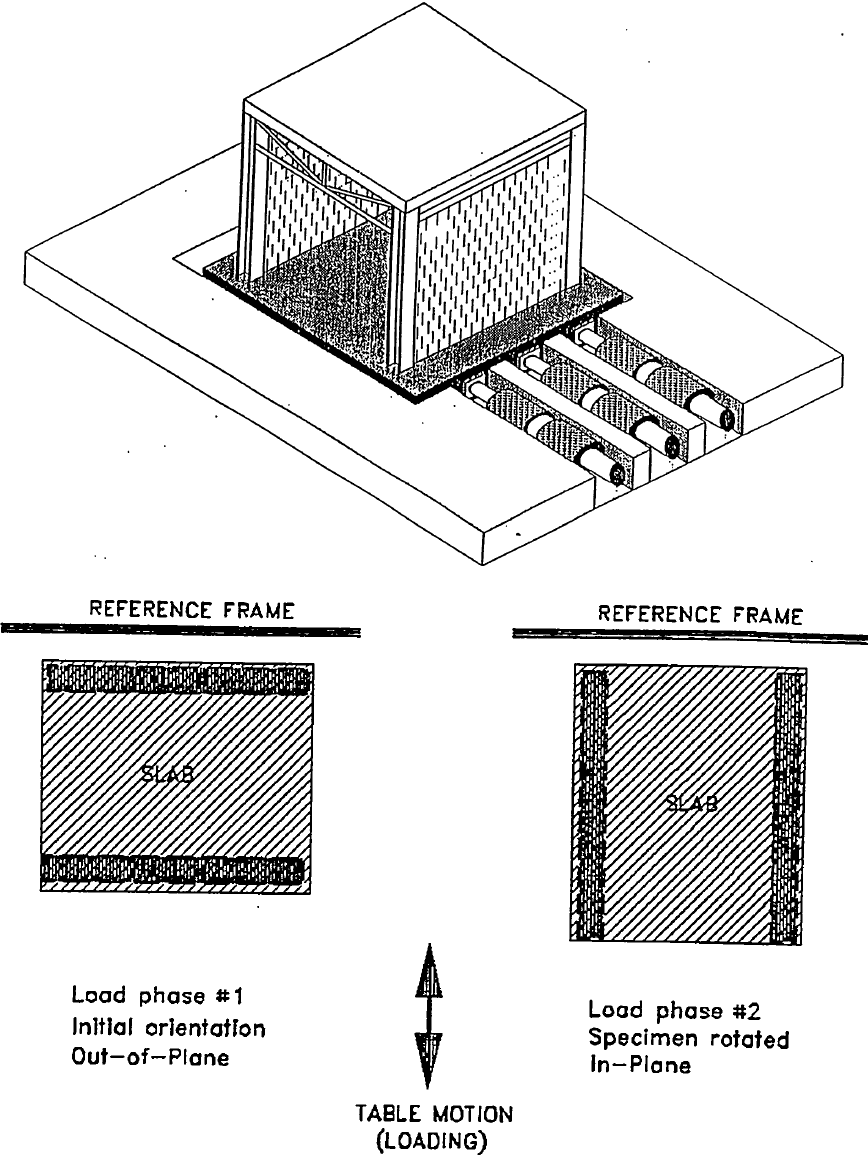This thesis presents both dynamical in-plane and out-of-plane tests on single bay and single storey steel structure with masonry infill. Two frames were connected by a slab and steel truss.
PROBLEM
Static testing, in- and out-of-plane, is presently being performed on clay tile infilled frame to obtain more information on structural characteristics of these these types of systems. T
This thesis presents both dynamical in-plane and out-of-plane tests on single bay and single storey steel structure with masonry infill. Two frames were connected by a slab and steel truss.
PROBLEM
Static testing, in- and out-of-plane, is presently being performed on clay tile infilled frame to obtain more information on structural characteristics of these these types of systems. There is a need to correlate the static tests results with the results obtained from dynamic testing in order to better understand the seismic performance of these types of structures.
AIM AND SCOPE
The tests were investigated to determine the structures strength and stifness characteristics. The main focus of study was on frame and panel load-deflection behaviour, along with acceleration amplification and frequency degradation behaviour.
DESIGN AND CONSTRUCTION OF THE TEST SPECIMENS:
The structure consists of a one—story, single bay system constructed with two steel frames, infilled with structural clay tile, and spaced approximately 9' apart. An 8" concrete roof slab is bolted to the top of the steel frames, and a truss bracing system is connected petween the two frames for added strength.
Specimen design:

Test design:

CONCLUSIONS
The areas of interest in the out-of-plane direction were acceleration amplifications, relative and absolute displacements, column deformations, and frequency degradation. The panels of the specimen had a larger acceleration amplification than either the roof slab or beam. The largest acceleration response occurred in the panels near the top of the walls in which an input amplification factor of about three was calculated. The relative and absolute displacement transducers indicated very little relative movement between the panel and frame. This suggests that the panel and frame were essentially moving together as a single unit, although frequency analysis indicated that the panel and frame were responding at two separate natural frequencies. The deformed shapes showed that the largest relative displacement between the panel and frame occurred midway up the columns. The truss system which connects the two walls added considerable stiffness to the top oc the specimen. This caused the maximum relative displacement to occur at midheight of the columns and nmay have caused the frame and panel to respond at two different frequencies. As a result of the testing, there was a small drop in the structures stiffness but there was no evidence of the panel's "walking—out" on the frame. The panel was still very stable after the completion of the out—of—plane testing.
The in—plane analysis also involved looking at acceleration amplification, relative and absolute displacements, and frequency degradation. Also, load—deflection behavior was investigated. An analysis of acceleration data indicates that there was considerably larger acceleration amplification in the columns than in the roof slab. This might be attributed to the large mass of the roof slab not responding to the input base notion as drastically as did the column. The load— deflection analysis indicated that the stiffness of the structure decreased with each progressive in—plane test. In comparison to static tests, higher stiffness was seen in the dynamically tested structure which could be attributed to the vertical load being applied by the slab. Ultimate strength characteristics were very similar to those observed •from static in—plane tests. Load—column force analysis indicated the formation of a diagonal compressive strut during loading which caused high lateral strains in the panels. In observing panel load— strain curves, it became evident that significant cracking of the panel did not occur until the fifth seismic test (12 x F.S. ). Frequency degradation occurred with increasing seismic input, indicating that the panel was cracking and losing stiffness. The sine sweep tests that were performed failed to locate the natural frequency of the structure which was much lower than initially thought. The panels were eventually failed by using an input acceleration of 3.0 g although it is possible that the panels failed due to fatigue. During all of these out—of—plane and in—plane tests, there was no evidence of the panels "walking out". Up until the last sine sweep test, the infill remained stable and still provided some load resistance. Therefore, infills can be expected to enhance the seismic resistance of otherwise laterally weak structures.
RECOMMENDATIONS FOR FUTURE RESEARCH
None were specified.










